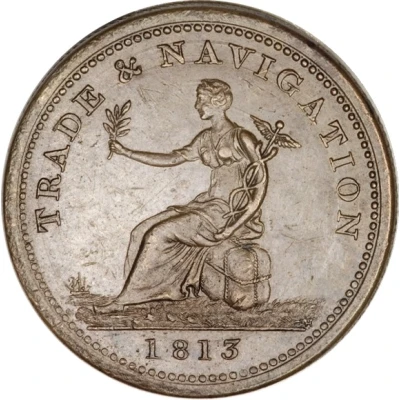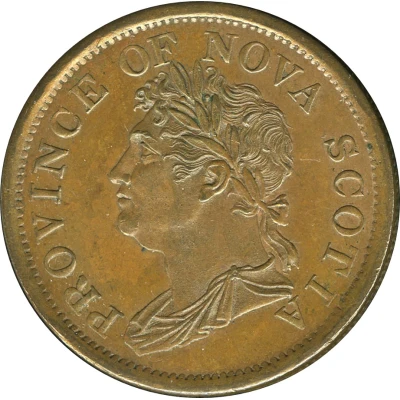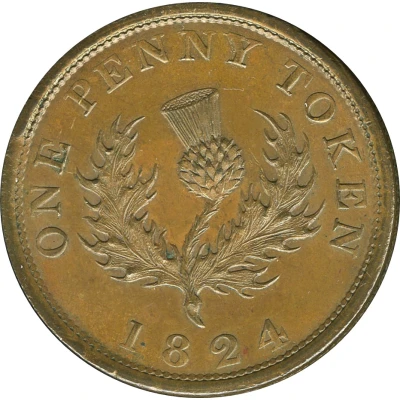


© PCGS
1 Penny Non-local/Trade and Navigation
1814 year| Copper | 16.6 g | 33.6 mm |
| Issuer | Nova Scotia (Canadian provinces) |
|---|---|
| Type | Token |
| Year | 1814 |
| Value | 1 Penny (1⁄240) |
| Currency | Pound (1812-1860) |
| Composition | Copper |
| Weight | 16.6 g |
| Diameter | 33.6 mm |
| Shape | Round |
| Technique | Milled |
| Orientation | Variable alignment ↺ |
| Demonetized | Yes |
| Updated | 2024-10-04 |
| Numista | N#98162 |
|---|---|
| Rarity index | 94% |
Reverse
Lettering surrounding circle containing value.
Script: Latin
Lettering:
PURE COPPER PREFERABLE TO PAPER .
ONE
PENNY
TOKEN
Edge
Engrailed, plain
Comment
Weight: 15.6 - 17.6gDiameter: 33.5 - 33.8mm
NS-20B1 1 over 0, engrailed, medal alignment
NS-20B2 1 over 0, engrailed, coin alignment
NS-20B3 Plain, coin alignment
These tokens were struck over many years in imitation of Thomas Halliday's design. They are of inferior workmanship and lighter in weight. The "H" does not appear on the obverse.
Interesting fact
One interesting fact about the Token 1 Penny (Non-local/Trade and Navigation) 1814 from Nova Scotia (Canadian provinces) made of Copper weighing 16.6g is that it was used as a form of currency in the province during a time when there was a shortage of official currency. The coin was issued by local merchants and traders to facilitate trade and commerce, and it was accepted as legal tender in the community. This fact highlights the resourcefulness and resilience of the people of Nova Scotia in the face of economic challenges.



